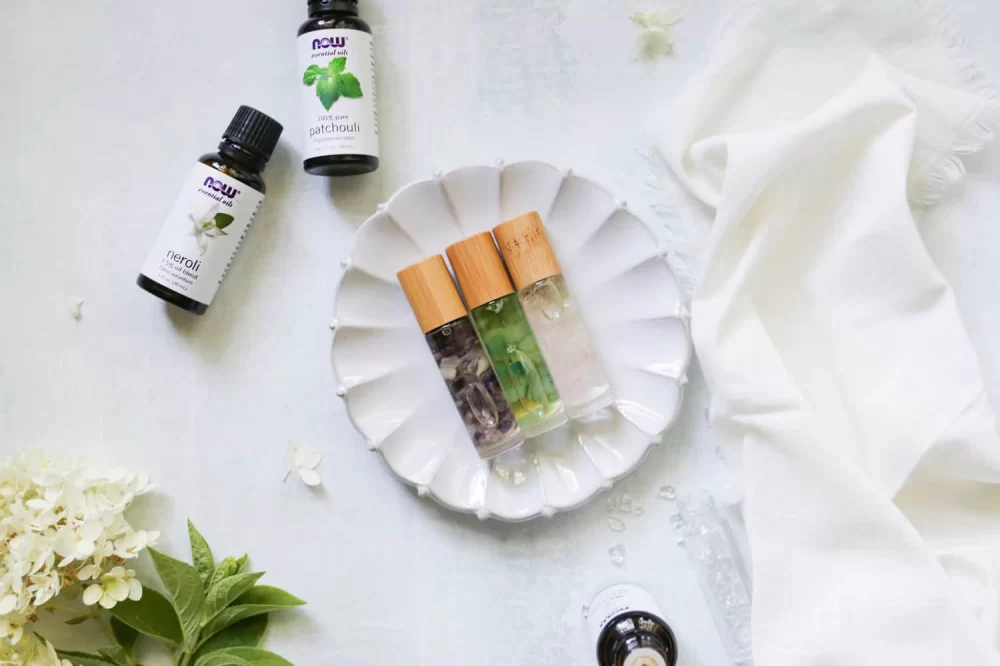How to Blend Essential Oils at Home for Perfect Scents
Essential oils have become a popular part of many people’s daily routines due to their numerous benefits. From creating a relaxing atmosphere at home to promoting wellness, these natural oils can work wonders. However, what truly makes them special is the ability to blend them to create unique, personalized scents. Whether you're looking to create a calming atmosphere, boost your energy, or simply enjoy a delightful fragrance, blending essential oils at home can be both fun and rewarding. Let’s dive into how you can easily blend essential oils to create the perfect fragrance at home.
1. Understanding the Basics of Essential Oils
Before diving into blending, it’s essential to understand what essential oils are and how they work. Essential oils are concentrated plant extracts derived from leaves, flowers, bark, and roots. These oils capture the natural aroma and therapeutic properties of the plants. They can be used in various ways such as in diffusers, baths, or as part of beauty and health routines. The key to blending essential oils lies in selecting oils that complement each other, creating a harmonious scent that works well for your desired outcome.
2. The Importance of Choosing the Right Carrier Oil
When blending essential oils, especially for topical use, it’s important to dilute them with a carrier oil. Carrier oils are natural oils like coconut oil, jojoba oil, or almond oil that help dilute the potency of essential oils, making them safe for skin application. They also act as a base, allowing essential oils to be evenly distributed without causing irritation.
Some popular carrier oils include:
- Coconut Oil: Known for its moisturizing properties, coconut oil blends well with almost any essential oil.
- Jojoba Oil: It closely mimics the natural oils in the skin and is often used for facial care blends.
- Sweet Almond Oil: A great option for sensitive skin and a popular choice for massage oils.
When blending essential oils, you can mix them in a ratio of 2-3% essential oil to carrier oil for safe skin application, depending on your skin’s sensitivity.
3. How to Choose Essential Oils for Blending
The next step is to decide on the essential oils to blend. Each essential oil has its unique fragrance profile and benefits. There are three primary categories of fragrances you can work with when blending essential oils:
- Top Notes: These are the first scents you’ll notice in a blend. They are typically light and fresh, such as lemon, peppermint, or eucalyptus.
- Middle Notes: These oils form the body of the blend. Examples include lavender, rosemary, and geranium. They bring balance and roundness to the fragrance.
- Base Notes: These provide depth and longevity to your blend. Popular base notes include sandalwood, patchouli, and vanilla.
When blending oils, try to include at least one essential oil from each category to create a well-rounded and balanced scent. For example, a blend with lavender (middle), peppermint (top), and sandalwood (base) can create a refreshing yet grounding fragrance.
4. Tools You’ll Need for Blending Essential Oils
Before starting your blending adventure, gather a few tools to help you mix your oils efficiently:
- Small Glass Bottles: Glass is ideal for storing essential oils as it doesn’t react with the oils.
- Pipettes: These are handy for adding precise amounts of essential oils to your mix.
- Measuring Cups or Spoons: Used to measure the carrier oil and essential oils accurately.
- Labeling Materials: When you create blends, labeling is important for future use, especially if you’re mixing multiple oils.
5. How to Blend Essential Oils: Step-by-Step
Now that you understand the basics, here’s a simple step-by-step guide to blending essential oils at home:
- Select Your Oils: Choose your top, middle, and base notes based on the type of fragrance you want.
- Measure Your Carrier Oil: Add about 1 tablespoon (15 ml) of your chosen carrier oil to a small glass bottle.
- Add Essential Oils: Start with 1-2 drops of top note oil, followed by 2-3 drops of middle note, and 1-2 drops of base note. You can adjust the amounts based on personal preference.
- Mix and Test: Gently shake the bottle to mix the oils. Test the scent on a cotton ball or your wrist to see how the fragrance develops.
- Let It Blend: Let your mixture sit for a day or two to allow the oils to combine fully. After that, test again and adjust if needed.
6. Blending Essential Oils for Different Purposes
Essential oils can be blended to create specific outcomes, such as promoting relaxation, boosting energy, or helping with sleep. Here are a few common blends and their benefits:
- Relaxing Blend: Lavender, chamomile, and sandalwood to help reduce stress.
- Energy Boosting Blend: Peppermint, lemon, and rosemary to invigorate your senses.
- Sleep Blend: Lavender, bergamot, and cedarwood for a calming nighttime fragrance.
Experiment with different combinations to find what works best for your mood or needs. There’s no right or wrong way to blend essential oils as long as you’re creating something that makes you feel good!
7. Safety Tips for Blending and Using Essential Oils
While essential oils offer many benefits, it’s crucial to use them safely. Here are some safety tips:
- Always dilute: Never apply undiluted essential oils directly to your skin as they can cause irritation or allergic reactions.
- Do a patch test: Before using any new blend, do a patch test on a small area of skin to check for any adverse reactions.
- Consult with a healthcare professional: If you have underlying health conditions or are pregnant, consult a doctor before using essential oils.
Blending essential oils is a fun and creative way to enhance your home, health, and well-being. By following the tips and guidelines in this guide, you’ll be able to craft beautiful, aromatic blends that suit your personal preferences and needs.


0 comments